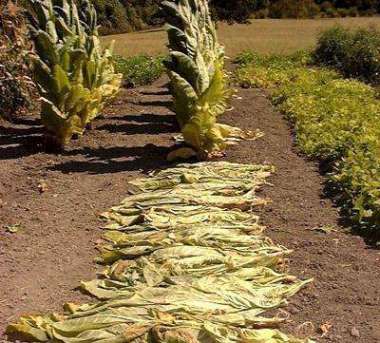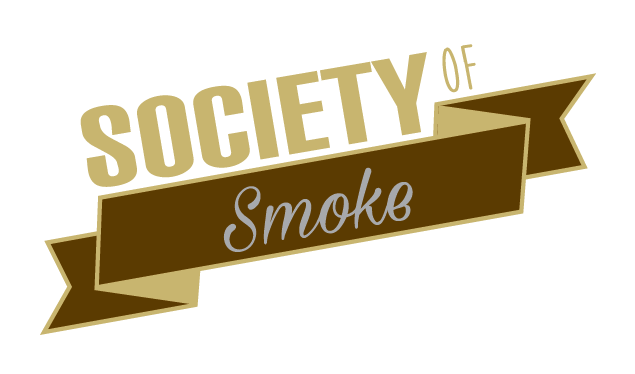an interesting article about latakia taking a huge hit maybe sometime soon!
Source: Blog Archives | Pipestud's Consignment Shop

I think all of us who enjoy smoking Latakia, whether on a daily basis or irregularly, are rightfully concerned about the state of Cyprian Latakia tobaccos now that the Syrian version has been long gone. I often get asked why can’t Latakia just be grown by someone in the United States so that we don’t have to worry about its availability in the future? Actually, that is a good question and deserves a good answer. I’m not sure that my answer is a good one, but I did do quite a bit of investigating recently and hope that my information here is fairly accurate.
Syrian Latakia was indeed a wonderful leaf that was grown only in the northern part of Syria where the soil was moderately deep and most importantly, rich with minerals that enabled the Shekk-el-bint plant (see photo), to produce thick and firm leaves that took readily to being sun dried and then smoked over fires that were made with woods from the area (as well as some local herbs), which clung readily to the Shekk-el-bint plant leaves, which were ten to twelve inches in length and quite narrow. Each plant had from fifteen to twenty leaves and once processed, retained a smoky aroma and the distinctive “salty and sweet leather” like flavors and stout bottom that Syrian Latakia fans have appreciated for many, many decades. At harvest time, the plant was cut and the leaves, plus the flowers (called by McClelland’s, “Rose of Latakia”), were spread out on the ground to dry in the sun, then were taken to storehouses where they were smoked for a period of 13-15 weeks with the area woods and herbs. The finished product never was high in nicotine but certainly had more Vitamin N than its Cyprian cousin due to the fact that the leaf had thicker veins which holds the nicotine. There is nowhere in the USA where the combination of deep, dry and mineral rich soils combine with long hot days and cool nights that helped to make the Shekk-el-bint plant thrive. It has been tried but was always a miserable failure.
Why is Syrian Latakia no longer being made in Syria? Back in the 1960’s the Syrian government severely restricted the production of Syrian Latakia due to environmental concerns that had great impact on a lot of other areas of Syria’s agriculture. Thousands of acres of woods were harvested and burned to make Syrian Latakia and the value vs. return was small compared to other agricultural endeavors. The growers and harvesters could not make enough money to continue production of tiny amounts annually, so they finally just quit. So, the Syrian Latakia shortage began well before the current war and failed economy. And with the unrest in the area getting worse instead of better, growing the Shekk-el –bint plant again and harvesting and processing it is about the last thing on the mind of the Syrian government at present time.
Why can’t blenders simply substitute Cyprian Latakia for the Syrian version? Well, actually they can and do; but only with specific blends where the difference does not greatly alter the presentation. Well known blenders like G.L. Pease, Mike McNiel, Russ Ouellette and others will readily tell you that the difference between Cyprian and Syrian tobacco is quite noticeable when combined with other leaf used in particular blends. The most noticeable difference is the fact that Syrian Latakia was so much more pronounced in its presentation, even when applied gently, and that using enough Cyprian Latakia in a blend to make up for the difference causes a bittersweet taste that does not benefit the presentation of most blends, and in fact, overwhelms them.
Is Cyprian Latakia in danger of going out of production? The short answer, unfortunately, is yes. In fact, there are reports out right now indicating that what we are now receiving from Cyprus is not the same Cyprian Latakia – for a variety of reasons – that was processed and exported even just a few years ago. I’ll cover the latest news that I have discovered regarding Cyprian Latakia, and whether it is also going the way of the Dodo bird in a future blog. I will say this for now; if you enjoy Latakia in your smokes, please make sure you are putting some in your cellar!
Steve
Source: Blog Archives | Pipestud's Consignment Shop

I think all of us who enjoy smoking Latakia, whether on a daily basis or irregularly, are rightfully concerned about the state of Cyprian Latakia tobaccos now that the Syrian version has been long gone. I often get asked why can’t Latakia just be grown by someone in the United States so that we don’t have to worry about its availability in the future? Actually, that is a good question and deserves a good answer. I’m not sure that my answer is a good one, but I did do quite a bit of investigating recently and hope that my information here is fairly accurate.
Syrian Latakia was indeed a wonderful leaf that was grown only in the northern part of Syria where the soil was moderately deep and most importantly, rich with minerals that enabled the Shekk-el-bint plant (see photo), to produce thick and firm leaves that took readily to being sun dried and then smoked over fires that were made with woods from the area (as well as some local herbs), which clung readily to the Shekk-el-bint plant leaves, which were ten to twelve inches in length and quite narrow. Each plant had from fifteen to twenty leaves and once processed, retained a smoky aroma and the distinctive “salty and sweet leather” like flavors and stout bottom that Syrian Latakia fans have appreciated for many, many decades. At harvest time, the plant was cut and the leaves, plus the flowers (called by McClelland’s, “Rose of Latakia”), were spread out on the ground to dry in the sun, then were taken to storehouses where they were smoked for a period of 13-15 weeks with the area woods and herbs. The finished product never was high in nicotine but certainly had more Vitamin N than its Cyprian cousin due to the fact that the leaf had thicker veins which holds the nicotine. There is nowhere in the USA where the combination of deep, dry and mineral rich soils combine with long hot days and cool nights that helped to make the Shekk-el-bint plant thrive. It has been tried but was always a miserable failure.
Why is Syrian Latakia no longer being made in Syria? Back in the 1960’s the Syrian government severely restricted the production of Syrian Latakia due to environmental concerns that had great impact on a lot of other areas of Syria’s agriculture. Thousands of acres of woods were harvested and burned to make Syrian Latakia and the value vs. return was small compared to other agricultural endeavors. The growers and harvesters could not make enough money to continue production of tiny amounts annually, so they finally just quit. So, the Syrian Latakia shortage began well before the current war and failed economy. And with the unrest in the area getting worse instead of better, growing the Shekk-el –bint plant again and harvesting and processing it is about the last thing on the mind of the Syrian government at present time.
Why can’t blenders simply substitute Cyprian Latakia for the Syrian version? Well, actually they can and do; but only with specific blends where the difference does not greatly alter the presentation. Well known blenders like G.L. Pease, Mike McNiel, Russ Ouellette and others will readily tell you that the difference between Cyprian and Syrian tobacco is quite noticeable when combined with other leaf used in particular blends. The most noticeable difference is the fact that Syrian Latakia was so much more pronounced in its presentation, even when applied gently, and that using enough Cyprian Latakia in a blend to make up for the difference causes a bittersweet taste that does not benefit the presentation of most blends, and in fact, overwhelms them.
Is Cyprian Latakia in danger of going out of production? The short answer, unfortunately, is yes. In fact, there are reports out right now indicating that what we are now receiving from Cyprus is not the same Cyprian Latakia – for a variety of reasons – that was processed and exported even just a few years ago. I’ll cover the latest news that I have discovered regarding Cyprian Latakia, and whether it is also going the way of the Dodo bird in a future blog. I will say this for now; if you enjoy Latakia in your smokes, please make sure you are putting some in your cellar!
Steve
